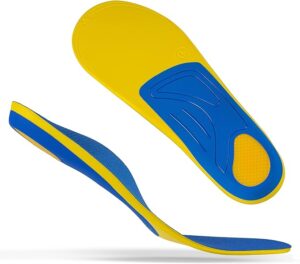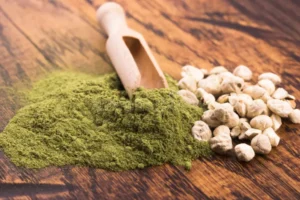Discover the best medial arch support insoles for enhanced foot comfort and health. Learn about their benefits, types, and how to choose the right one.
Arch support insoles are crucial for maintaining proper foot health and comfort, particularly for those with flat feet or other arch-related issues. The medial arch, an essential structure of the foot, plays a significant role in our daily movement and comfort. This article delves into the world of medial arch support insoles, shedding light on their importance and guiding you to find the best options available.
Outline:
- Understanding Medial Arch Support Insoles
- Anatomy of the foot and its arches
- What are medial arch support insoles?
- Benefits of using these insoles
- Types of Medial Arch Support Insoles
- Custom vs. over-the-counter insoles
- Material considerations
- Finding the Best Fit: A Guide
- How to measure your arch
- Selecting the right size and shape
- Top Picks for Medial Arch Support Insoles
- Review of popular brands
- Features to look for
- Caring for Your Medial Arch Support Insoles
- Maintenance and cleaning tips
- When to replace your insoles
- Common Misconceptions About Arch Supports
- Debunking myths
- Real benefits vs. perceived benefits
7. WHERE TO BUY
Understanding Medial Arch Support Insoles
Anatomy of the foot and its arches
The human foot is an intricate structure composed of bones, muscles, ligaments, and tendons, intricately designed to provide support, balance, and mobility. One of the most critical aspects of foot anatomy is its arches, which play a pivotal role in how we move and distribute weight.
The Structure of the Foot
- Bones: The foot comprises 26 bones, divided into three sections: the forefoot (including the metatarsals and phalanges), the midfoot (comprising the arches), and the hindfoot (comprising the heel and ankle).
- Muscles and Tendons: These provide movement and stability. The Achilles tendon, the largest tendon in the foot, connects the calf muscles to the heel bone, playing a crucial role in walking, running, and jumping.
- Ligaments: These are tough bands of tissue that connect bones and stabilize joints. The plantar fascia, a significant ligament, runs along the bottom of the foot and supports the arch.
The Arches of the Foot
- Medial Longitudinal Arch: The most prominent arch, running from the heel to the forefoot along the inside of the foot. It absorbs shock and adds spring to your step.
- Lateral Longitudinal Arch: A less pronounced arch along the outer edge of the foot, aiding in balance and weight distribution.
- Transverse Arch: This arch runs across the midfoot, contributing to foot strength and flexibility.
The Role of Arches in Foot Health
The arches of the foot are essential for several reasons:
- Weight Distribution: They help in evenly distributing body weight across the feet and legs.
- Shock Absorption: The arches act as natural shock absorbers, cushioning the impact of walking, running, or jumping.
- Balance and Stability: They contribute to balance and stability, aiding in various movements.
- Flexibility and Adaptability: The foot’s arches allow the foot to adapt to different surfaces and support various movements.
What are medial arch support insoles?
Medial arch support insoles are specialized shoe inserts designed to provide targeted support to the medial longitudinal arch of the foot. This medial arch is the curved, raised area on the inside of the foot, extending from the heel to the ball. The primary purpose of these insoles is to offer stability, support, and comfort, particularly for individuals who may have foot conditions or biomechanical imbalances that affect this area of the foot.
Key Features of Medial Arch Support Insoles
- Targeted Support: They specifically bolster the medial arch, ensuring it does not collapse excessively when walking or standing.
- Material and Design: These insoles are often crafted from a range of materials like foam, gel, or semi-rigid plastic, and are designed to fit comfortably inside footwear.
- Contoured Shape: They typically have a raised area that fits snugly under the medial arch, providing support and helping to distribute pressure more evenly across the foot.

Benefits of Using Medial Arch Support Insoles
- Improved Comfort and Stability: By supporting the medial arch, these insoles can significantly enhance foot comfort, especially for those spending long hours on their feet.
- Alleviation of Foot Pain: They are beneficial for individuals suffering from conditions like flat feet, plantar fasciitis, or overpronation, as they help in reducing strain on the medial arch.
- Enhanced Foot Mechanics: Proper arch support can improve overall foot alignment, which in turn can positively impact gait and posture.
- Injury Prevention: By maintaining proper foot alignment, these insoles can also play a role in preventing injuries related to overuse or improper foot mechanics.
Ideal Candidates for Medial Arch Support Insoles
- Individuals with Flat Feet: Those with collapsed or low arches can find relief as these insoles help in mimicking the natural arch of the foot.
- People Experiencing Foot Pain: Those suffering from arch-related pain, heel pain, or discomfort due to conditions like plantar fasciitis.
- Athletes or Active Individuals: For those engaging in activities that put a lot of stress on the feet, providing additional support can be beneficial.
- People with Biomechanical Imbalances: Those who overpronate (roll their feet inward excessively) can benefit as these insoles help in correcting alignment.
Benefits of using these insoles
1. Enhanced Comfort and Support
- Reduces Foot Fatigue: By providing support to the arch, these insoles can reduce foot fatigue, especially for people who spend long hours standing or walking.
- Improves Foot Comfort: The additional cushioning and support make shoes more comfortable, even during extended wear.
2. Alleviates Pain and Discomfort
- Relieves Plantar Fasciitis Symptoms: These insoles can help alleviate pain associated with plantar fasciitis by supporting the arch and reducing strain on the plantar fascia.
- Addresses Flat Feet Discomfort: Individuals with flat feet or collapsed arches can experience significant relief as these insoles provide the necessary arch support that their feet lack naturally.
3. Corrects Foot Alignment and Mechanics
- Improves Walking and Running Mechanics: Proper arch support can lead to better alignment of the feet, ankles, and legs, which can improve overall walking and running mechanics.
- Prevents Overpronation: Medial arch support can help control excessive inward rolling (overpronation) of the foot, which is beneficial in preventing related injuries.
4. Reduces Risk of Further Injuries
- Prevents Additional Foot Conditions: By maintaining proper foot alignment, these insoles can help prevent issues like bunions, hammertoes, and knee pain that often result from poor foot mechanics.
- Aids in Recovery: For those recovering from foot injuries, medial arch support insoles can provide the extra support needed during the healing process.
5. Versatility and Ease of Use
- Suitable for Various Footwear Types: These insoles can be used in different types of shoes, including athletic shoes, casual footwear, and work boots.
- Easily Transferable: They can be moved from one pair of shoes to another, making them a versatile and cost-effective solution.
6. Enhances Athletic Performance
- Improves Stability and Balance: Athletes may find improved performance due to the enhanced stability and balance that these insoles provide.
- Reduces Muscle Fatigue: By promoting proper foot alignment, the insoles can also help in reducing overall leg and foot muscle fatigue during intense activities.
Types of Medial Arch Support Insoles
Custom vs. Over-the-Counter Insoles
When considering medial arch support insoles, one of the key decisions is choosing between custom-made and over-the-counter (OTC) options. Each type has its own set of benefits and considerations, tailored to meet different needs and preferences.
Custom Insoles
- Tailored Fit: Custom insoles are made to fit the exact contours of your feet, providing personalized support and comfort. This is particularly beneficial for those with specific foot conditions or unusual foot shapes.
- Professional Assessment: Obtaining custom insoles typically involves a consultation with a podiatrist or a foot specialist, ensuring that your foot issues are professionally assessed.
- Targeted Support and Correction: These insoles can be designed to address specific problems like severe overpronation, high arches, or plantar fasciitis more effectively than OTC insoles.
- Durability: They are often made from high-quality materials and may last longer than OTC insoles.
- Cost and Accessibility: Custom insoles are generally more expensive and require a visit to a healthcare provider, which may not be feasible or necessary for everyone.
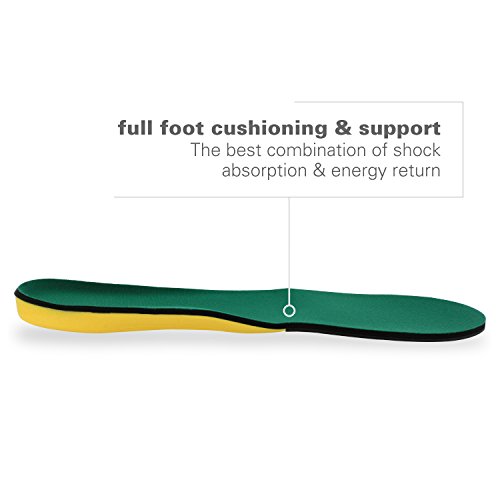
Over-the-Counter Insoles
- Convenience and Availability: OTC insoles are readily available in many retail stores and pharmacies, making them a convenient option.
- Affordability: They are typically less expensive than custom insoles, making them a more budget-friendly choice.
- Variety of Options: OTC insoles come in various shapes, sizes, and materials, allowing consumers to choose based on personal preference and need.
- General Support and Comfort: While they may not offer the precise fit of custom insoles, many OTC insoles provide adequate support and comfort for general foot issues.
- Trial and Error: Finding the right OTC insole might require some experimentation, as the fit and support level can vary greatly between different brands and models.
Choosing Between Custom and OTC Insoles
- Consider Your Specific Needs: If you have severe foot pain, biomechanical issues, or a medical condition affecting your feet, custom insoles may be more appropriate.
- Budget Considerations: For those with minor foot discomfort or looking for general arch support, OTC insoles can be an effective and affordable option.
- Consult a Professional: If you’re unsure which type to choose, consulting a foot specialist can provide clarity and guidance.
Material considerations
The material used in medial arch support insoles plays a crucial role in their effectiveness, comfort, and durability. When choosing the right insoles for your needs, it’s essential to consider the various materials available. Here are some key material considerations:
1. Foam-Based Insoles
- Memory Foam: These insoles contour to the shape of your foot, providing customized support and cushioning. They offer excellent comfort and pressure relief.
- EVA Foam: Ethylene-vinyl acetate (EVA) foam insoles are lightweight and shock-absorbing. They provide a good balance of support and cushioning.
- Gel-Infused Foam: Gel inserts in foam insoles enhance shock absorption and provide extra comfort. They are suitable for individuals seeking added cushioning.
2. Plastic or Rigid Insoles
- Polyurethane (PU): Rigid insoles made of PU offer strong arch support and stability. They are durable and suitable for those with severe overpronation or flat feet.
- Thermoplastic: These insoles can be heated and molded to the shape of your foot for a customized fit. They provide excellent support and are often recommended for specific foot conditions.
3. Leather Insoles
- Natural Materials: Leather insoles are breathable and provide a comfortable, moisture-wicking environment for the feet. They are often used for dress shoes and can be beneficial for individuals with leather allergies.
4. Composite Materials
- Combination Insoles: Some insoles combine different materials to achieve a balance of support and comfort. For example, a foam top layer on a rigid plastic base can offer both cushioning and stability.
5. Gel Insoles
- Silicone Gel: Gel insoles are known for their excellent shock absorption properties. They are ideal for individuals seeking maximum cushioning and comfort.
6. Hybrid Insoles
- Combination Materials: Hybrid insoles may combine foam, gel, and other materials to provide a blend of support and cushioning. They cater to a wide range of needs.
7. Anti-Microbial and Moisture-Wicking Properties
- Odor Control: Some insoles are treated with anti-microbial agents to prevent odor-causing bacteria. Look for insoles with such features, especially if you have foot odor concerns.
- Moisture Management: Insoles with moisture-wicking properties help keep your feet dry and comfortable, reducing the risk of blisters and fungal infections.
8. Breathability
- Ventilation Holes: Insoles with ventilation holes or perforations enhance breathability, making them suitable for hot and humid conditions.
9. Durability
- Longevity: Consider the durability of the material, especially if you plan to use the insoles frequently. Rigid materials tend to be more durable, while softer materials may wear out faster.
10. Allergies and Sensitivities
- Material Compatibility: If you have allergies or sensitivities to certain materials, ensure that the chosen insoles do not contain those allergens.
Finding the Best Fit: A Guide
How to measure your arch
Measuring your arch is a crucial step in finding the right medial arch support insoles that provide the perfect fit and support for your feet. Here’s a step-by-step guide on how to measure your arch:
1. Gather the Necessary Materials
Before you begin, ensure you have the following items ready:
- A piece of paper larger than your foot
- A pen or pencil
- A ruler or measuring tape
- A chair or stool to sit on
- A flat surface to place the paper on
2. Prepare Your Foot
Sit on the chair or stool and place the piece of paper on the flat surface in front of you. Remove your shoes and socks so that your foot is bare.
3. Wet the Bottom of Your Foot (Optional)
To get a clear footprint, you can lightly wet the bottom of your foot. This step is optional but can help create a more defined impression.
4. Make the Impression
Place your foot flat on the paper, ensuring equal weight distribution across the entire sole. You should be sitting with your knee bent at a 90-degree angle.
5. Trace Your Footprint
Using the pen or pencil, carefully trace the outline of your entire foot. Start from the heel and follow the contours of your arch all the way to the ball of your foot. Be as accurate as possible.
6. Measure the Arch Height
Once you’ve traced your entire foot, use the ruler or measuring tape to measure the height of your arch. Measure from the bottom of the heel to the highest point of the arch. This measurement represents your arch height.
7. Determine Your Arch Type
Based on your arch height measurement, you can categorize your arch as:
- High Arch: If the measurement is significantly higher than average, you likely have a high arch. High arches may require insoles with extra cushioning and support.
- Normal/Medium Arch: If your measurement falls within the average range, you have a normal or medium arch. Most people fall into this category and can benefit from standard arch support insoles.
- Low Arch (Flat Feet): A measurement significantly lower than average indicates a low arch or flat feet. Individuals with low arches may require insoles with strong arch support.
8. Repeat for the Other Foot
It’s important to measure both feet, as they may have slightly different arch heights. Repeat the same process for your other foot and compare the measurements.
9. Choose the Right Insoles
Once you have determined your arch type for both feet, you can confidently choose the medial arch support insoles that match your specific needs. Insoles are often labeled and categorized based on arch type, making it easier to find the right fit.
Selecting the right size and shape
After measuring your arch and determining your arch type, the next crucial step is selecting the right size and shape of medial arch support insoles. Choosing the appropriate size and shape ensures that the insoles provide optimal support and comfort for your feet. Here’s how to make the right selection:
1. Refer to the Manufacturer’s Sizing Chart
Most medial arch support insoles come with a sizing chart provided by the manufacturer. Refer to this chart to find the recommended size based on your foot length or shoe size. It’s essential to follow the manufacturer’s guidelines as different brands may have slight variations in sizing.
2. Match the Insole Size to Your Shoe Size
In general, the size of the insole should match your shoe size. For example, if you wear a size 9 shoe, you should choose size 9 insoles. However, keep in mind that some insoles are designed to be trimmed or cut to fit, allowing for a more customized fit.
3. Consider the Insole Shape
Medial arch support insoles come in various shapes to accommodate different types of footwear and arch profiles. Here are common insole shapes:
- Full-Length Insoles: These extend from the heel to the toe and are suitable for most shoe types, including athletic shoes and casual footwear.
- Three-Quarter Length Insoles: These cover the heel and extend to the ball of the foot. They are ideal for shoes with less space, like dress shoes.
- Arch Support Insoles: Some insoles focus primarily on providing arch support and may not cover the entire length of the foot. These are designed to fit under the arch area and can be used in conjunction with other insoles.
4. Evaluate the Insole’s Arch Type
Medial arch support insoles are typically categorized based on arch types. Ensure that the insole you choose matches your arch type, whether it’s for high arches, normal arches, or flat feet. The arch support should align with your specific needs.
5. Consider Trim-to-Fit Insoles
If you can’t find an exact match for your shoe size or arch type, consider trim-to-fit insoles. These insoles can be trimmed along designated lines to customize the length and shape to fit your shoes and feet accurately.
6. Try Them On
Whenever possible, try on the insoles with the shoes you intend to wear them with. Walk around to assess comfort and fit. Ensure that the insoles do not cause any discomfort or crowding inside your shoes.
7. Seek Professional Advice
If you have specific foot conditions, ongoing foot pain, or if you’re unsure about the right insoles for your needs, consult a podiatrist or a foot specialist. They can provide expert guidance and may recommend custom-made insoles for a precise fit.
8. Read User Reviews
Reading reviews from other users who share similar foot types or conditions can provide valuable insights into the comfort and effectiveness of specific insoles. Online reviews can help you make an informed decision.
Top Picks for Medial Arch Support Insoles
Review of popular brands
When it comes to choosing medial arch support insoles, several popular brands offer a range of options to cater to different foot types and needs. Let’s take a closer look at some of these brands, including a review of Atlas Arch Support:
1.Atlas Arch Support
- Review: Atlas Arch Support is a newer player in the arch support insole market. They have gained attention for their innovative approach to insole design. Atlas offers custom-fit insoles created based on a 3D scan of your feet, promising an unparalleled level of comfort and support. Users who have tried Atlas Arch Support insoles report excellent results in terms of pain relief and improved comfort.
2. Superfeet
- Review: Superfeet is a well-established brand known for its high-quality insoles. They offer a variety of arch support options, including styles for high arches, low arches, and everything in between. Users often praise Superfeet for their durability and long-lasting comfort. However, some may find them a bit pricey.
3. Powerstep
- Review: Powerstep insoles are recognized for their affordability and effectiveness. They provide excellent arch support and are comfortable for daily wear. While they may not have the same level of customization as some other brands, they are a popular choice among those seeking reliable arch support.
4. Dr. Scholl’s
- Review: Dr. Scholl’s is a well-known brand that offers a wide range of over-the-counter insoles, including arch support options. Their products are readily available in most stores, making them convenient to purchase. While they may not be as specialized as some other brands, they are a budget-friendly choice for general arch support.
5. Spenco
- Review: Spenco is praised for its comfortable insoles that cater to various arch types. Users appreciate the cushioning and shock absorption provided by Spenco insoles. They are often recommended for individuals with plantar fasciitis or other foot conditions.
Features to look for
Atlas Arch Support Insoles
- Custom Fit: Atlas Arch Support is known for its custom-fit approach, offering insoles tailored to the unique shape of your feet, ensuring a precise fit.
- Innovative Design: Look for innovative design features that enhance arch support, comfort, and shock absorption.
- Durability: Assess the durability of the materials used in Atlas insoles to ensure they can withstand regular use.
- Personalized Support: Expect personalized support based on a 3D scan of your feet, addressing specific arch support needs.

Spenco Insoles
- Cushioning Comfort: Spenco insoles are praised for their cushioning comfort, making them ideal for individuals seeking superior shock absorption.
- Moisture-Wicking: Check for moisture-wicking properties that keep feet dry and comfortable, reducing the risk of blisters and odors.
- Versatility: Spenco offers a variety of insoles suitable for different activities and shoe types, ensuring versatility in use.
- Foot Health: Consider Spenco’s focus on overall foot health, addressing conditions like plantar fasciitis and overpronation.
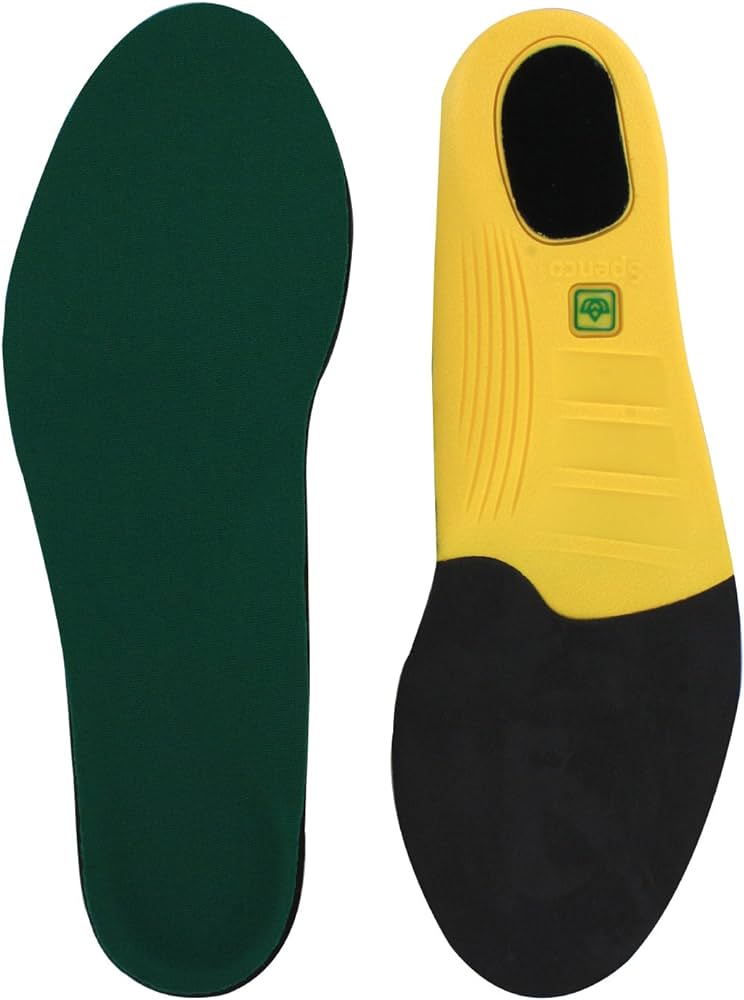
Dr. Scholl’s Insoles
- Accessibility: Dr. Scholl’s insoles are readily available in most stores, providing convenience for shoppers.
- Affordability: They are budget-friendly options for those seeking general arch support without breaking the bank.
- Variety: Dr. Scholl’s offers a wide range of insoles to cater to different foot types and needs.
- Ease of Purchase: Consider the ease of purchase and accessibility of Dr. Scholl’s insoles in your local area.
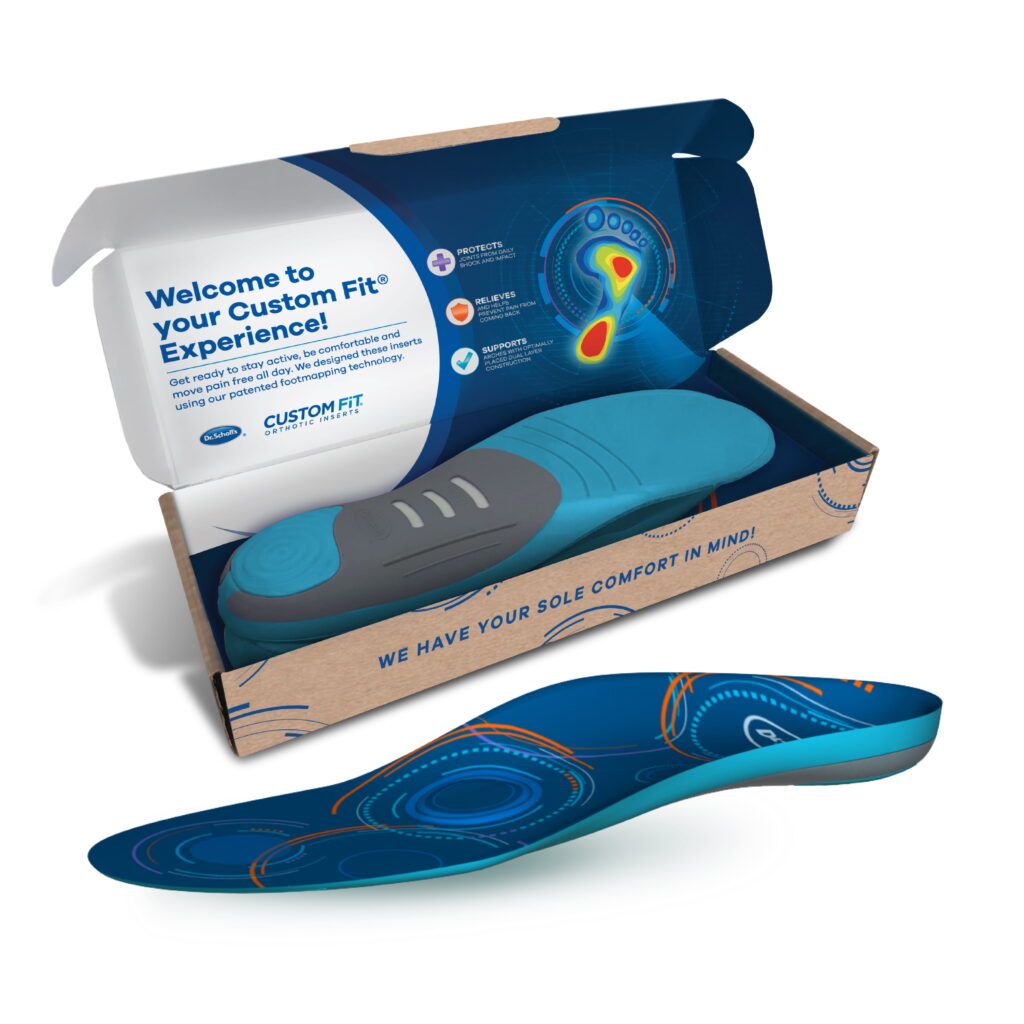
Powerstep Insoles
- Affordable Support: Powerstep is recognized for its affordability while providing reliable arch support.
- Comfort: Look for features that ensure comfort for extended wear, especially for those who are on their feet all day.
- Arch Support: Assess the level of arch support provided by Powerstep insoles, ensuring it matches your requirements.
- User-Friendly: Consider user-friendliness, including ease of fitting into various shoe types.
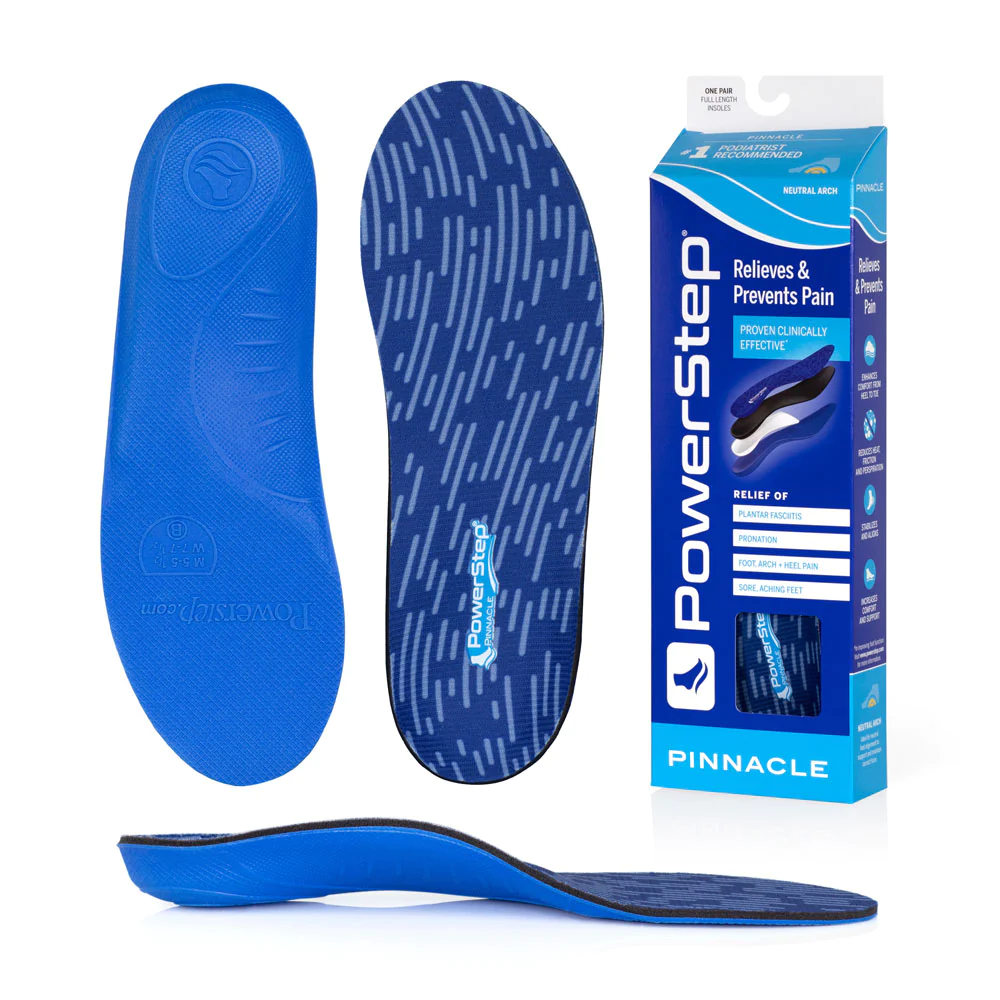
Superfeet Insoles
- Diverse Options: Superfeet offers a diverse range of insoles, including options for high arches, low arches, and various activities.
- Durability: Evaluate the durability of Superfeet insoles, which are often praised for their long-lasting performance.
- Specialized Support: Look for insoles tailored to specific foot conditions or activities, ensuring specialized support.
- Brand Reputation: Consider Superfeet’s reputation for producing high-quality, reliable insoles.
Keep in mind that while these brands offer specific features and benefits, the choice ultimately depends on your individual foot type, needs, and preferences. Reading user reviews and trying on different insoles can help you find the perfect match for your feet.
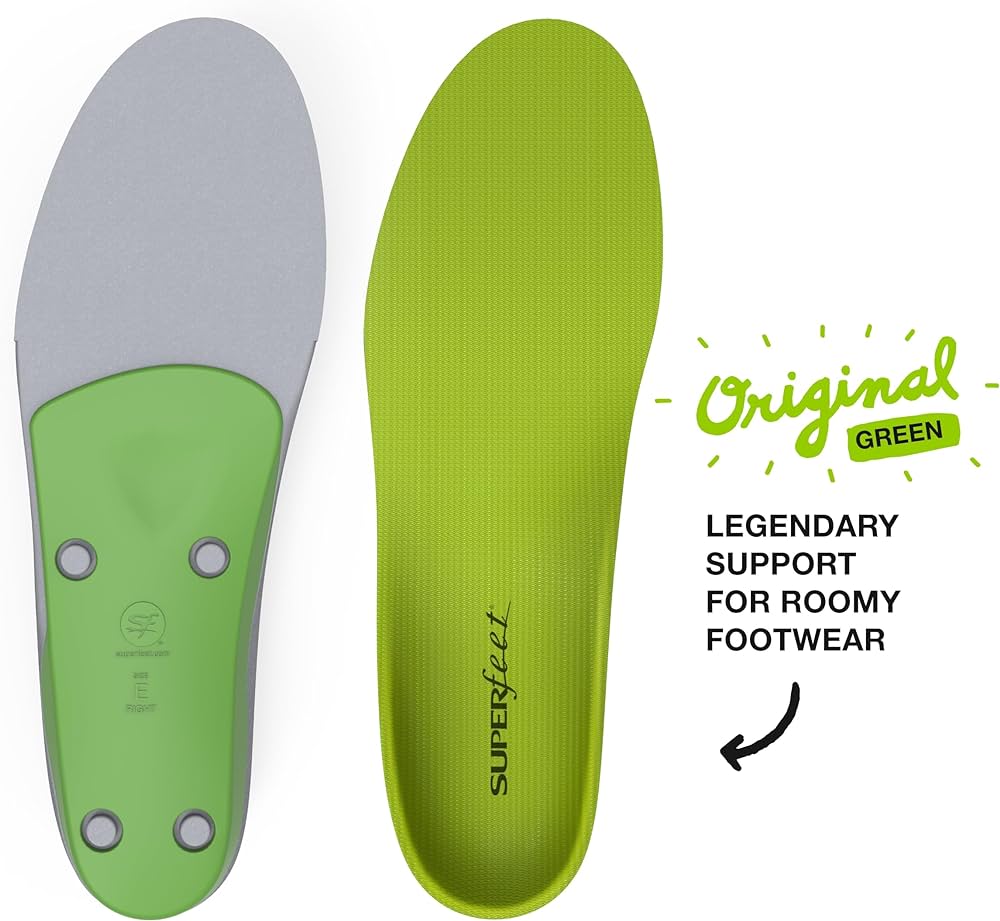
Caring for Your Medial Arch Support Insoles
Maintenance and cleaning tips
Proper maintenance and cleaning of your medial arch support insoles are essential to ensure their longevity and hygiene. Here are some tips to keep your insoles in great condition:
1. Regular Inspection
- Inspect for Wear and Tear: Periodically check your insoles for signs of wear, such as flattened cushioning or visible damage. Replace them if they show significant wear.
2. Remove Insoles After Use
- Allow Ventilation: After wearing your shoes, remove the insoles to allow both the insoles and shoes to air out and dry. This prevents moisture buildup and odor.
3. Hand Wash or Spot Clean
- Gentle Cleaning: If your insoles are dirty or have absorbed moisture, gently hand wash them with mild soap and lukewarm water. Avoid using harsh chemicals or abrasive brushes.
4. Air Dry Only
- Avoid Heat: Never use direct heat sources like heaters or hairdryers to dry your insoles, as excessive heat can damage them. Instead, let them air dry at room temperature.
5. Use Odor Control Products
- Odor Absorbers: To combat odors, consider using odor-absorbing insole inserts or sachets. These can help keep your insoles and shoes smelling fresh.
6. Rotate Between Multiple Pairs
- Alternate Insoles: If possible, rotate between multiple pairs of insoles. This allows each pair to fully dry and prevents excessive wear on a single set.
7. Store Properly
- Proper Storage: When not in use, store your insoles in a cool, dry place away from direct sunlight. Avoid leaving them in hot, humid environments, which can cause deterioration.
8. Trimming or Customization
- Follow Instructions: If your insoles are trim-to-fit or have customization options, follow the manufacturer’s instructions carefully to achieve the best fit.
9. Replace When Necessary
- Replace Periodically: Over time, insoles lose their effectiveness. If you experience discomfort or reduced support, it’s time to replace them, typically every six to twelve months, depending on usage.
10. Consult Manufacturer Guidelines
- Read Instructions: Refer to the manufacturer’s guidelines for specific maintenance and cleaning recommendations tailored to your insoles.
11. Seek Professional Cleaning
- Professional Cleaning: If your insoles require deep cleaning or have specific care requirements, consider having them professionally cleaned by a shoe or insole specialist.
12. Foot Hygiene
- Maintain Foot Hygiene: Keep your feet clean and dry to prevent excessive moisture and odor buildup inside your shoes and insoles.
13. Consider Insole Covers
- Use Insole Covers: Insole covers or protectors can help shield your insoles from dirt, sweat, and odors, extending their lifespan.
When to replace your insoles
Medial arch support insoles play a crucial role in providing comfort and support for your feet. However, like any other footwear accessory, they have a limited lifespan and need to be replaced when they no longer offer the desired benefits. Here are some signs indicating when it’s time to replace your insoles:
1. Visible Wear and Tear
- Flattened Cushioning: Over time, the cushioning in your insoles may lose its resilience and become flattened. If you notice visible compression or lack of padding, it’s a clear sign that your insoles are worn out.
2. Reduced Arch Support
- Loss of Support: If your insoles no longer provide the arch support they once did, and you start experiencing discomfort or pain in your feet, it’s a strong indicator that replacement is needed.
3. Visible Damage
- Cracks or Holes: Any visible damage to the insoles, such as cracks, holes, or separation of layers, is a clear sign that they are no longer effective and should be replaced.
4. Increased Foot Discomfort
- Discomfort or Pain: If you begin to experience discomfort, pain, or fatigue in your feet, despite wearing your insoles, it may be due to the ineffectiveness of the insoles. Consider replacing them with fresh ones.
5. Odor and Hygiene Issues
- Persistent Odor: Despite regular cleaning and maintenance, if your insoles develop a persistent and unpleasant odor that cannot be eliminated, it may be time for a replacement to maintain foot hygiene.
6. Visible Compression Marks
- Visible Wear Patterns: Check the bottom of your insoles for visible wear patterns or compression marks that indicate where your weight is concentrated. If these patterns become pronounced, it’s a sign that the insoles are no longer providing even support.
7. Changes in Shoe Fit
- Shoe Fit Issues: If you notice that your shoes no longer fit comfortably or that they feel tighter, it could be because your insoles have compressed, taking up more space inside your shoes.
8. Reduced Comfort and Support
- Lack of Comfort: If you no longer feel the same level of comfort and support that your insoles initially provided, it’s time to replace them to regain those benefits.
9. Insole Lifespan
- Manufacturer Recommendations: Pay attention to the manufacturer’s recommended lifespan for the insoles. Most insoles have a lifespan of six months to a year, depending on usage.
10. Frequent Adjustments
- Constant Re-Adjustment: If you find yourself frequently re-adjusting your insoles to get the desired fit and support, it’s a sign that they may have lost their effectiveness.
11. Consult a Specialist
- Podiatrist’s Advice: If you have specific foot conditions or concerns, consult a podiatrist or foot specialist. They can assess the condition of your insoles and recommend replacements based on your unique needs.
In general, it’s a good practice to inspect your insoles regularly and be attentive to any changes in comfort, support, or foot health. Replacing your medial arch support insoles when they show signs of wear ensures that you continue to receive the benefits of proper arch support and comfort for your feet.
Common Misconceptions About Arch Supports
Debunking myths
Medial arch support insoles have gained popularity for their ability to provide comfort and alleviate foot-related issues. However, several myths and misconceptions surround these insoles. Let’s debunk some of the common myths:
Myth 1: “Medial Arch Support Insoles Are Only for People with Foot Pain”
Debunked: While medial arch support insoles are beneficial for individuals with foot pain, they are not exclusively for them. These insoles can provide preventive support, enhance comfort, and improve overall foot health for individuals without existing foot problems.
Myth 2: “All Insoles Are the Same”
Debunked: Insoles vary significantly in terms of design, materials, and intended use. Medial arch support insoles are specifically designed to address issues related to arch support and foot alignment, making them different from generic insoles.
Myth 3: “Medial Arch Support Insoles Are Uncomfortable”
Debunked: When properly fitted and chosen based on your arch type, medial arch support insoles can be highly comfortable. They provide the necessary support without causing discomfort when used correctly.
Myth 4: “You Need a Prescription for Medial Arch Support Insoles”
Debunked: While custom-made insoles may require a prescription, most over-the-counter medial arch support insoles can be purchased without one. They are readily available for individuals seeking extra support and comfort.
Myth 5: “Insoles Can Cure All Foot Problems”
Debunked: Insoles can alleviate discomfort and support proper foot alignment, but they may not cure all foot problems. Serious medical conditions may require professional treatment in addition to using insoles.
Myth 6: “Medial Arch Support Insoles Are Only for Athletes”
Debunked: While athletes commonly use these insoles to enhance performance and reduce the risk of injuries, they are suitable for anyone seeking improved foot comfort and support in everyday activities.
Myth 7: “Insoles Should Feel Uncomfortable at First”
Debunked: Insoles should not cause discomfort when properly fitted. While it may take some time to get used to the added support, they should not cause pain. If they do, it’s an indication that they may not be the right fit.
Myth 8: “Insoles Are a One-Size-Fits-All Solution”
Debunked: Insoles should be chosen based on your individual foot type and the specific issues you want to address. There is no one-size-fits-all solution, as everyone’s feet are unique.
Myth 9: “Insoles Are Only for Older Adults”
Debunked: Insoles can benefit individuals of all ages. They are not exclusively for older adults and can provide support and comfort to individuals with various lifestyles and activity levels.
Myth 10: “Once You Use Insoles, You Can’t Stop”
Debunked: While insoles can enhance comfort and support, they are not addictive. If your foot condition improves or you no longer require them, you can gradually reduce their use.
In conclusion, medial arch support insoles are versatile and beneficial for a wide range of individuals, not just those with existing foot issues. By choosing the right insoles for your needs and debunking these common myths, you can make an informed decision about incorporating them into your daily footwear for improved comfort and foot health.
Real benefits vs. perceived benefits
Medial arch support insoles have gained popularity for their potential to provide comfort and support to the feet. However, it’s essential to distinguish between the real benefits supported by scientific evidence and the perceived benefits that individuals may experience subjectively. Let’s explore both:
Real Benefits:
1. Improved Arch Support: Scientifically, medial arch support insoles are designed to enhance the natural arch of the foot, providing support to the plantar fascia and reducing strain on the arch. This support can help alleviate conditions like plantar fasciitis and flat feet.
2. Enhanced Foot Alignment: Medial arch support insoles promote proper foot alignment, which can contribute to better overall body posture. This alignment may reduce the risk of musculoskeletal issues in the feet, knees, hips, and lower back.
3. Shock Absorption: Many insoles feature cushioning materials that provide shock absorption, reducing the impact on the feet during walking or running. This can be especially beneficial for athletes and those with high-impact activities.
4. Improved Comfort: Insoles can enhance overall foot comfort by reducing pressure points and providing cushioning. This can reduce foot fatigue, especially for individuals who spend long hours on their feet.
5. Pain Relief: Scientific studies have shown that medial arch support insoles can help relieve foot pain associated with conditions like plantar fasciitis, overpronation, and metatarsalgia. They may also reduce pain in the knees and lower back.
Perceived Benefits:
1. Subjective Comfort: Some individuals may perceive increased comfort when using medial arch support insoles, even if they don’t have specific foot issues. The feeling of support and cushioning can be a matter of personal preference.
2. Enhanced Performance: Athletes and active individuals may perceive improved performance and reduced fatigue when using these insoles. While this can be valid, individual experiences vary.
3. Reduced Fatigue: People who stand or walk for extended periods may perceive reduced fatigue in their feet and legs when using insoles. This can contribute to an improved sense of well-being.
4. Prevention: While real benefits are often associated with pain relief and specific foot conditions, some individuals may use insoles as a preventive measure to reduce the risk of future foot problems.
It’s important to note that individual experiences with medial arch support insoles can vary widely. While scientific research supports their effectiveness for specific conditions, not everyone may experience the same level of benefit. It’s advisable to consult with a healthcare professional or podiatrist if you have specific foot concerns or conditions.
In summary, medial arch support insoles offer both real and perceived benefits. The real benefits are supported by scientific evidence and can provide relief for various foot-related issues. Perceived benefits, on the other hand, are based on individual experiences and preferences. Ultimately, the decision to use these insoles should be based on your unique needs and comfort, with a focus on achieving the best possible foot health.
